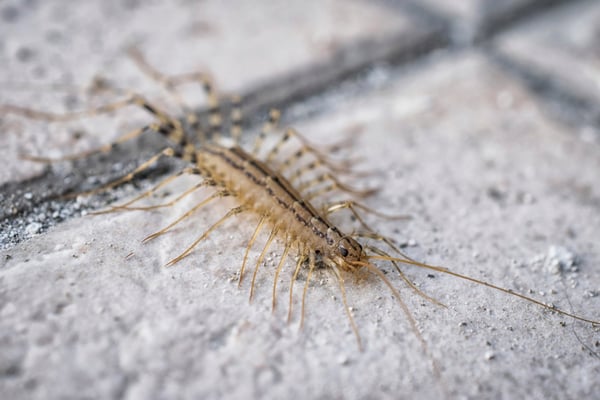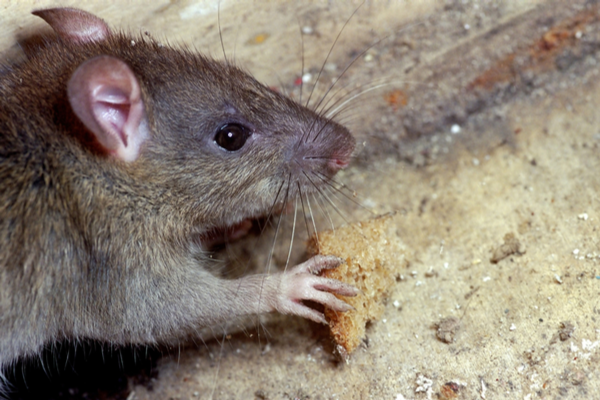It’s probably the first thing you think when you see an insect: “can that thing sting me?” It’s certainly one of the questions our customers ask us most frequently. You probably ask this question most about insects you don’t recognize. Everyone knows a bee stings, but when you don’t even know what you’re looking at, how are you supposed to know if it’s dangerous?
In order to help answer this pressuring question, we put together a list of the insects our customers ask us about the most. These are the insects (and arthropods) you’re worried about, whether they can sting you, and whether you should consider them dangerous:
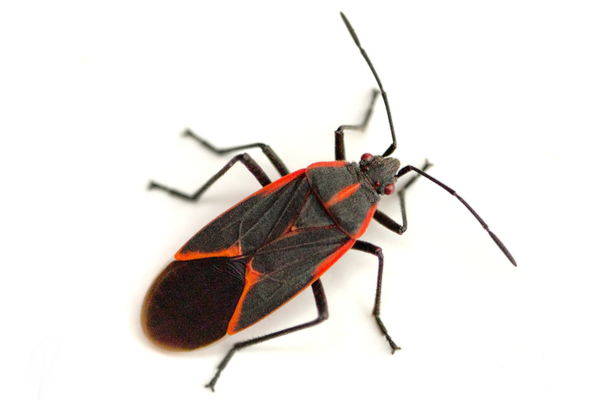
What do they look like?
Box elder bugs are about ½ an inch long. They are mostly black with red or orange markings on their wings If you see a small black and red bug near a window or door this fall, it’s probably a box elder bug.
Can they sting you?
No. Box elder bugs do not have stingers. They may occasionally bite defensively, but this is very rare and isn’t dangerous.
Are they dangerous?
No. Box elder bugs don’t sting, bite, transmit diseases, or seriously damage property. At worst, they’re nuisance pests when they congregate around homes in large numbers.

What do they look like?
Most termites are around ¼ to ½ an inch long. They have soft, almost translucent white, orange, or light brown bodies. Most termites look similar to white or orange ants.
Can they sting you?
No. Termites don’t have stingers. While every caste of termite could potentially bite people, they won’t unless directly handled. Even in the unlikely scenario that a termite did bite you, the bite would not be dangerous
Are they dangerous?
Yes! Termites may not be able to hurt you directly, but they can seriously hurt your home. Termites eat wood and inflict billions of dollars in structural damage to buildings every year.
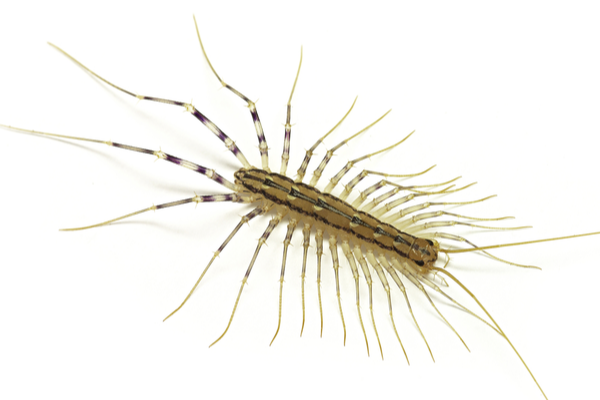
What do they look like?
House centipedes’ yellow-grey bodies measure around an inch long. They also have 2 to 3 inch-long antennae. Fully grown house centipedes have up to 30 legs in total.
Can they sting you?
Yes. Two of the house centipedes’ legs closest to their heads are actually hollow and carry venom. They can use these legs to sting humans. A house centipede’s sting may hurt as much as a bee sting, but it isn’t dangerous. Centipedes sting humans very rarely.
Are they dangerous?
No. Though they can sting, house centipede stings are rare and can’t seriously hurt one. House centipede stings could trigger allergic reactions, but this is very unlikely. Centipedes also can’t transmit diseases or seriously damage property.
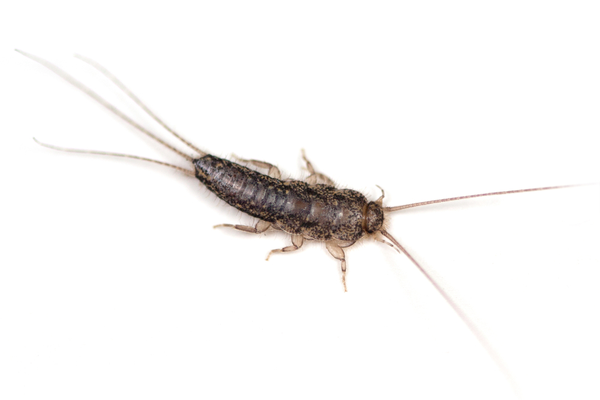
What do they look like?
Silverfish are silver-grey, scaly insects with segmented bodies that taper off, giving them a teardrop shape. They measure around ½ to ¾ inches long and have very light, almost translucent white legs and antennae. Adult silverfish also have three long, forking tail tendrils. Silverfish antennae and tails are almost as long as a silverfish’s body.
Can they sting you?
No. Silverfish don’t have stingers and can’t sting anyone. Though they have mouthparts, they’re not known to bite humans either.
Are they dangerous?No. Silverfish can’t transmit diseases or hurt people in any way. They can significantly damage paper, clothing, fabric, wallpaper, and other stored goods, however. The damage silverfish inflict is never dangerous, but it can get expensive!
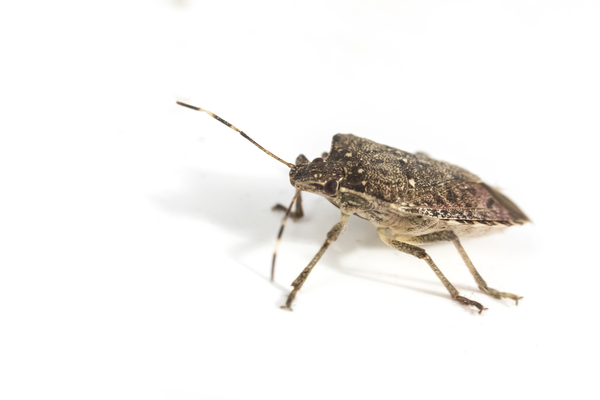
What do they look like?
Brown marmorated stink bugs are around ½ to ¾ inches long. They’re a mottled brown or brown-grey color with banded white and brown antennae. Most stink bugs have a shield-shaped crest on their back concealing their wings. Adult brown marmorated stink bugs have distinctive white markings beneath their wing covers on their lower back.
Can they sting you?
No. Stink bugs don’t have stingers and can’t sting anyone. In fact, brown marmorated stink bugs have straw-like sucking mouthparts, which means they can’t bite, either. These stink bugs are unable to break your skin to hurt you in any way.
Are they dangerous?No. Stink bugs don’t bite, sting, transmit diseases, or inflict property damage. Their distinctive stench is unpleasant and may stain surfaces, but it isn’t dangerous. Very rarely, people may experience allergic reactions to stink bugs or stink bug bi-products, but this is unlikely. Stink bugs are also considered a major agricultural pest, but not a dangerous one.
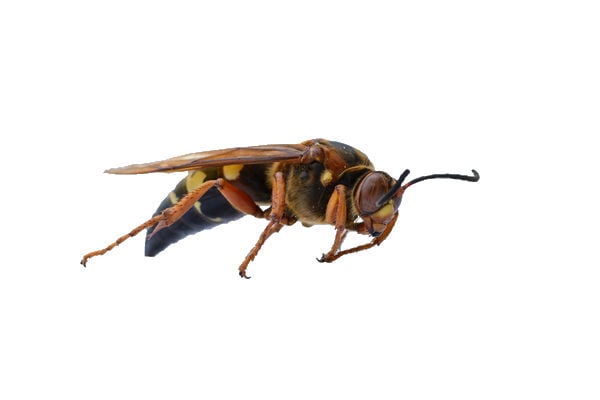
What do they look like?
Cicada killers live alone in small nests in the ground instead of larger hives. They’re around 1 to 1 ½ inches long. Cicada killer’s lower abdomens are pale yellow and black, while their upper bodies, legs, eyes, and wings are a distinctive red-orange color. Most cicada killer wasps have wiry blonde hairs on their chests.
Can they sting you?
Yes. Female cicada killer wasps have large stingers that they use to inject venom into prey. Cicada killers can and will sting people, and these stings are comparably painful to most hornet or yellowjacket stings. Cicada killers are less defensive of their nests than eusocial wasps. They will only sting if surprised, handled, or very directly threatened.
Are they dangerous?
Not usually. Cicada killers should only be considered as dangerous as the average wasp. Like other wasps, they can administer a painful sting multiple times, but they will only do so if threatened. If you’re allergic to wasp venom, cicada killers should be considered a serious threat. Cicada killers can occasionally become serious distressing pests when they nest in yards in large numbers.
Whether your pest can sting you or not, you shouldn’t have to deal with it in or around your home. If you need help clearing out an insect infestation, or you just have more questions about stinging insects, get in touch with Plunkett’s Our experts can answer your questions, solve your problem, and make sure it never happens again.


